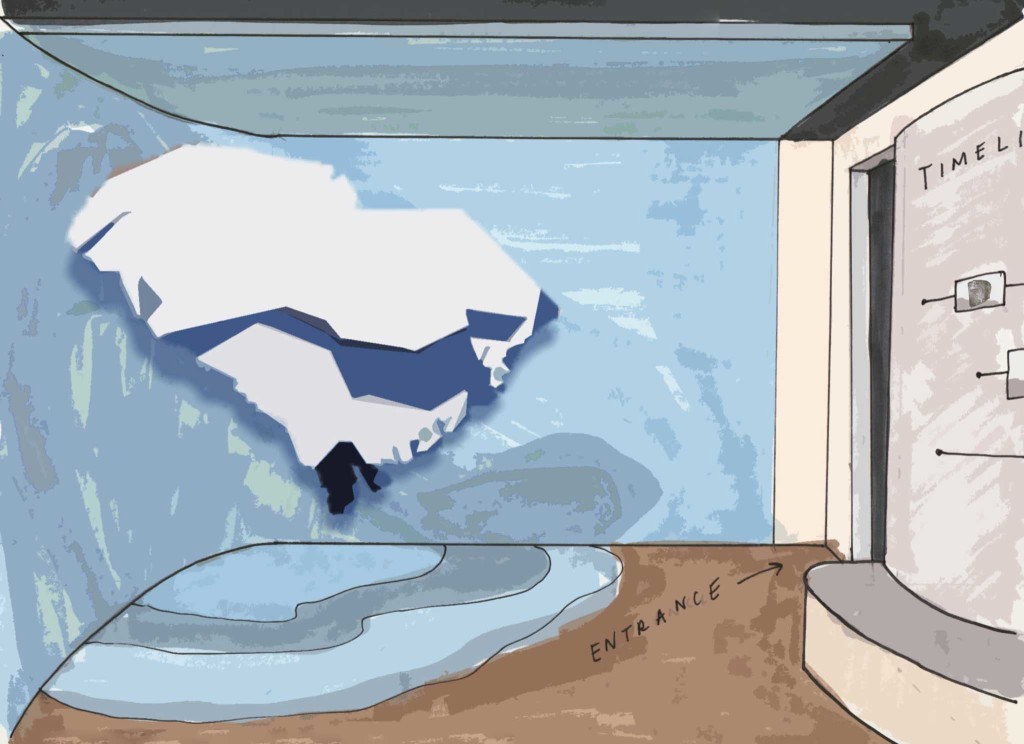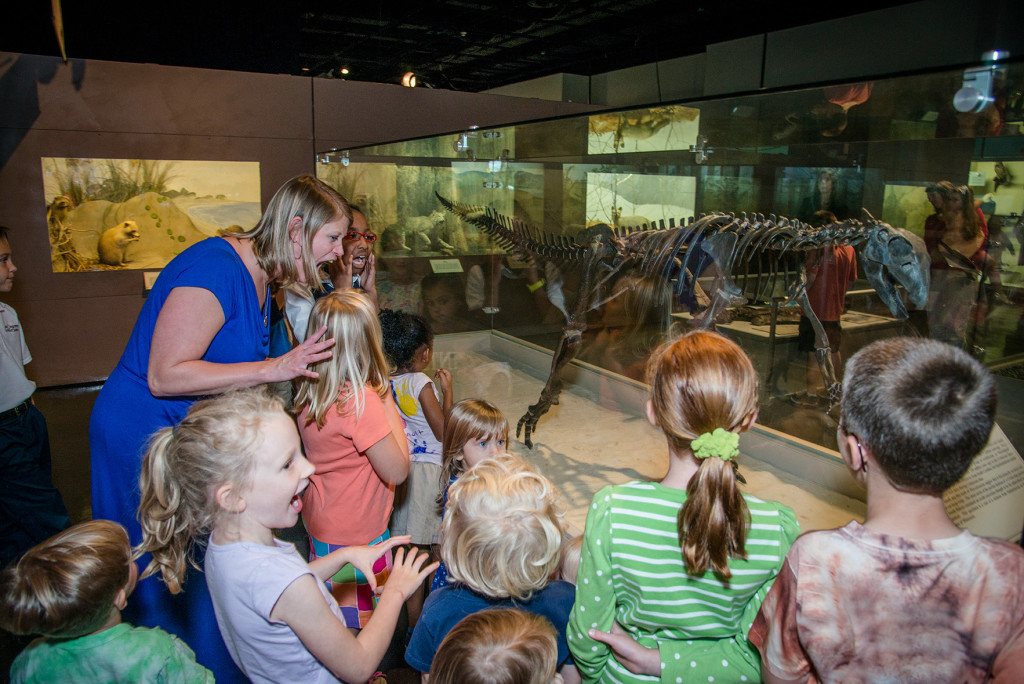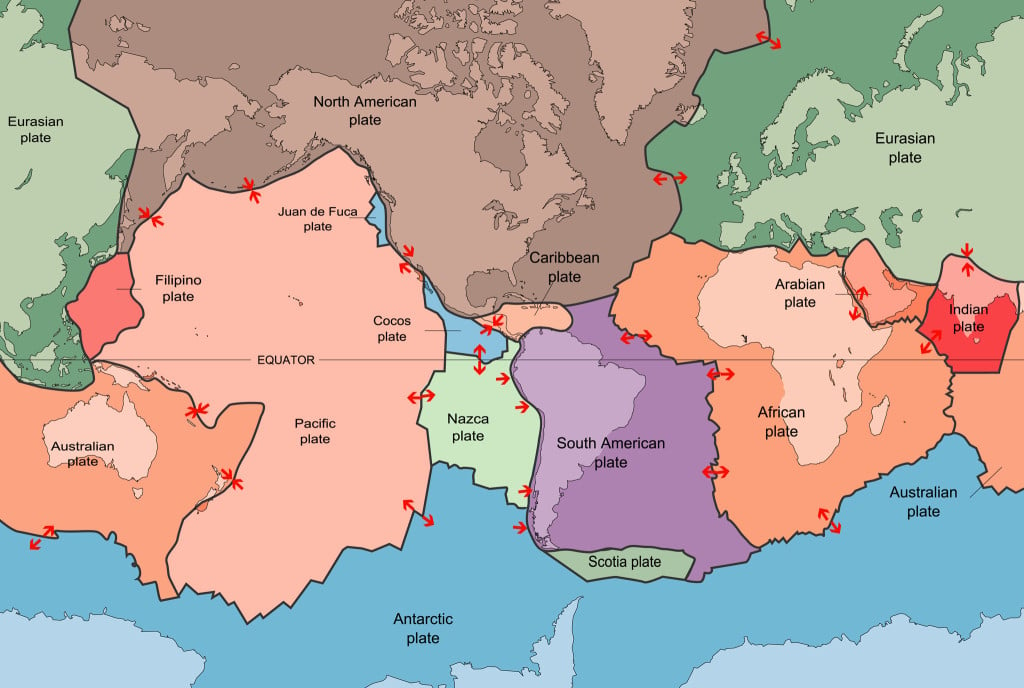Bringing Them Back to Life: Changing Sea Levels
Bringing Them Back to Life is a blog series from The Charleston Museum that provides updates and plans for our Natural History Gallery renovations.
The Natural History Gallery renovation project is a pivotal objective of the Museum’s Strategic Plan for 2015-2018. The gallery addresses a number of goals set forth in the plan, including increasing visitation, enhancing the Museum’s public presence and expanding outreach to the local community. With regard to the latter, the Museum has been actively involved in that endeavor in the last two school years as we have hosted third graders from Charleston County School District at the Museum and fourth graders from both Charleston County and Berkeley County School Districts at the Heyward-Washington House.
This school year, over 3,800 third graders came to the Museum from 44 schools across the County. The programs provided by Museum staff for these students met state curriculum standards for both social studies and science. Stephanie Thomas, Chief of Education and Interpretation, and her staff used the Lowcountry History Hall and Becoming Americans galleries to cover cultural history and the Natural History Gallery, in its present format, supplemented with special stations set up throughout the Museum, to teach the science component. The new Natural History Gallery will meet state curriculum standards for science, so grade-appropriate learning experiences will be immediately available for future school groups and will not require additional staff setup. STEM (science, technology, engineering and math) concepts will be key to learning objectives in the gallery.
Beginning with the earliest prehistory of the Lowcountry, the gallery exhibits will take students through time up to the present day. The variety of creatures they will encounter, through the fossil record, will help give them an understanding of the unique biodiversity of our area and the way that animals adapted over time to fluctuating environments. Interactives, meanwhile, related to changing sea levels in South Carolina throughout its history and the physics of flight as it pertained to the world’s largest ever known flying bird, Pelagornis sandersi, will address topics still very relevant to today’s world. Without question, with regard to children’s education, this is a monumental step forward toward goals set forth in the Museum’s Strategic Plan.
On the fundraising front, we are so grateful to all of our FANS (Friends and Needed Supporters of The Charleston Museum) as they are busily involved in preparations for Elemental, a fundraising gala in support of the Natural History Gallery renovation, to be held April 29 at the Joseph Manigault House and the Museum. It promises to be an absolutely wonderful evening. If you have not purchased tickets yet, you can make your reservations online. We look forward to seeing you there.
Curator of Natural History Matt Gibson’s latest blog on changing sea levels may inspire your attendance!
Changing Sea Levels
A guiding theme throughout the new Natural History Gallery will be how ocean levels have changed the environment, and therefore the flora and fauna, of the Lowcountry. The exhibition begins with the Lowcountry submerged below the waves, before many of the animal and plant groups we are familiar with even existed. The Earth’s terrain has changed dramatically since the oceans first formed with ocean levels driven by tectonic and glacial cycles. The beginning of the exhibition will focus on what drives these processes and the components that make up the earth beneath our feet.
A major part of what drove early Earth processes, and still drives them today, is plate movement. Plate tectonics explains how the hardened crust of the Earth is fractured and moves over the denser magma within the planet. The process is driven by convection, currents of magma that rise as they are heated and sink as they cool. This circular motion of magma causes continents to move almost like they are on the world’s slowest conveyor belt. Additionally, not all plates are on the same “belt” or convection cell, so they are moving in different directions and into each other. For example, the North American Plate is slowly crashing into the Pacific Plate. This collision is causing a ripple in the plates, which we feel as earthquakes in places like California. The collision of these two plates is also what formed the Rocky Mountains. The interaction at a collision point is also dependent on the rocks and minerals that make up that plate. In our example, we have two very different plates. The Pacific Plate is made of dense igneous rock known as basalt. The North American Plate is composed of granite, which is less dense than basalt. This means that at the point of impact, the Pacific Plate, being heavier, is sinking below the North American Plate and down into the magma to eventually melt and become new magma.
What does this mean for the Lowcountry? We are in a different scenario where, rather than colliding with a plate, the Lowcountry is moving away from a plate. In the middle of the Atlantic there is a large rift zone (pictured above) where two plate boundaries are moving apart with magma coming up to form new crust. This means that as the Pacific Plate is melting, new crust is forming in the Atlantic moving North America and South America farther away from Europe and Africa. In fact, earlier in the Earth’s history before this rift formed, the Lowcountry was actually landlocked between the interior of North America and the northwestern portion of Africa! Obviously, this would have led to very different animal and plant life than what we see now!





